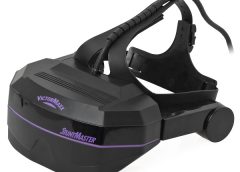By the time 1993 was over you would be forgiven for thinking VR was all but dead, but nothing could be further from the truth. In fact, without many of the headsets released this year (1994), we might not have had the technology and know-how to make the VR headsets of today!
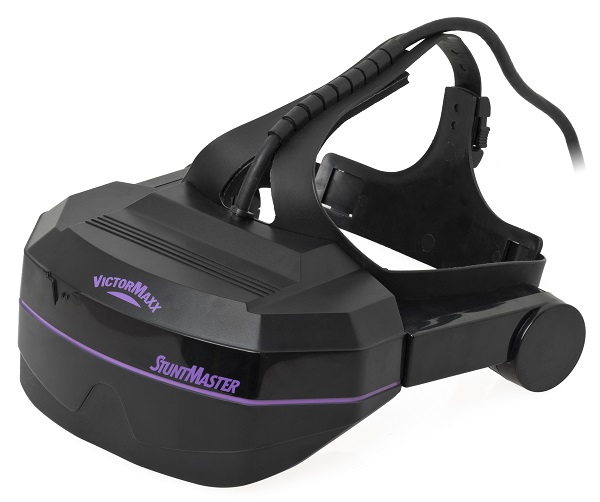
Released in 1994, the VictorMaxx Stuntmaster headset not only beat Sega to the punch but it also became the first customer grade VR headset to be released across all platforms at that time.
Their headset was compatible with both the Super Nintendo and the Sega Genesis and with a planned release date of August, they would be the first to market (little did VictorMaxx know their failure would put the final nail into the SEGA VR). FVT had planned to follow this release with an IBM-compatible version in the first quarter of 1994. Although the StuntMaster had a monoscopic display while Virtua Sega HMD had a biscopic display, the feedback from the CES didn’t declare any clear winner when it comes to the best choice between both upcoming system. The StunMaster was even advertised to come packaged with two genesis cartridges for around the same price as the Virtua Sega HMD which was advertised to come with only one game.
Sadly, from the first review tests, the system was deemed a failure. Not only did the system not come with any games, but the experience delivered was poor at best. The system was difficult to configure and the screen resolution (280×86) was too low and would often result in a blurry image. The other problem was that SEGA had just announced the Sega Genesis Model II, a cost-effective revision of the Sega flagship console which would not be compatible with the VictorMaxx. In fact, the model 2 removed the DIN port used by the VictorMaxx to connect to the SEGA Genesis meaning it was dead to half the market the moment it was launched.
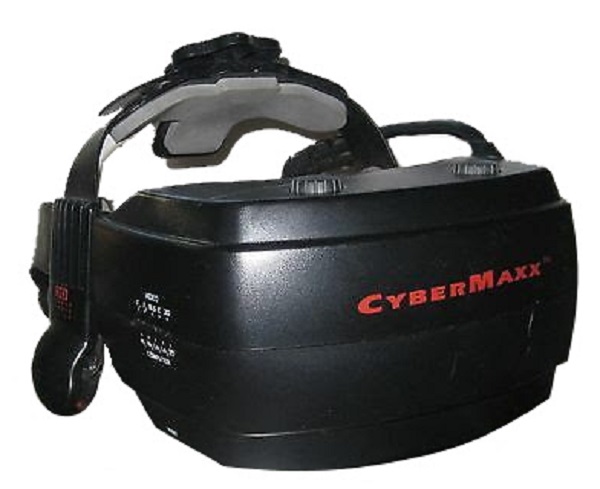
But that didn’t stop them and the CyberMaxx was first released in November 1994. The first model, called model 120, was sold for $699. The HMD featured a twin 505 x 230 resolution display (120,000 pixels per display), but was not yet compatible an Apple Computer. It was stated by Bungie Sofware that support for the CyberMaxx would be added to Marathon via a patch whenever CyberMaxx would be ready to support Apple computers, indicating that VictorMaxx were working on the ADB interface to allow connectivity with Macs. Details on the Model 120 are sketchy, but we know it had a fairly limited reach. The financial statements show revenue from the CyberMaxx in 1994 were only $606,143, which, at a sale price of $699, represent only 867 units.
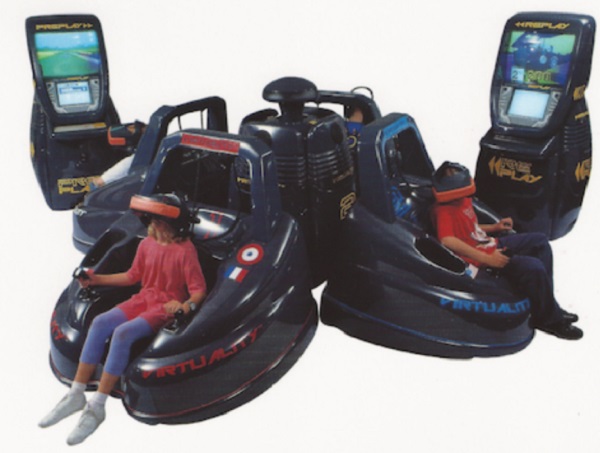
Meanwhile, over in Virtuality, the 2000SU and SD models were introduced to the market. Powered by an Intel 486-PC and using Motorola 88110 processors for graphics rendering. They had several more games compared to their 1000 series including Buggy Ball, Dactyl Nightmare 2 – Race For The Eggs!, Zone Hunter and even Pac-Man VR.

At the time PAC-MAN fever was spreading and this new fully immersive 3D virtual reality game from Virtuality allowed the player to actually becomes PAC-MAN! Released through a licensing agreement with NAMCO, the creators of the original PAC-MAN, Virtuality did its best to Retain all of the original gameplay, but they also allowed for up to four PAC-MAN to play together enabling them to see, talk and compete with each other in the same virtual maze while still trying to outwit the ghosts it was a big hit in the arcades if only for a short while and one of their most popular systems to date.
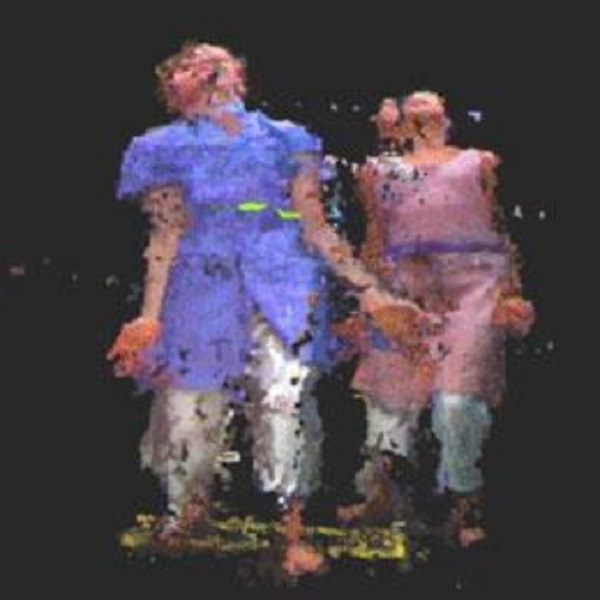
Over in the world of Augmented Reality, Julie Martin creates the theatre production ‘Dancing in Cyberspace’. The performance featured dancers and acrobats engaging with virtual objects of human size. The Australian Council for the Arts supported the idea and its implementation and this was the first augmented-reality-powered theatre performance and it was quite a micro-hit at the time. These days of course augmented and virtual reality applications in art are no longer a novelty and are quite welcomed by the arts community and funding councils.
But the most important person of 1994 had to be the former NASA researcher Mark Bolas and his company Fakespace Labs.
We go back to the year 1990 when Fake Space Labs emerged out of a project at NASA Ames Research Center to create a telepresence camera system and a display for virtual exploration of computational fluid dynamics data in a virtual windtunnel. They then developed and sold a variety of innovative devices for virtual reality, including the BOOM display, FS2, Pinch Glove, Immersive Workbench, Wide5 HMD, and other custom projects.
Just a small selection of its customers included branches of the Department of Defense, Department of Energy, and NASA; commercial customers such as Daimler Chrysler, Google, IO Displays, and Virtual Research; research clients such as Stanford University and venture-funded startups and education and entertainment clients such as the Museum of Science and Industry and Sapporo Brewery in Japan.
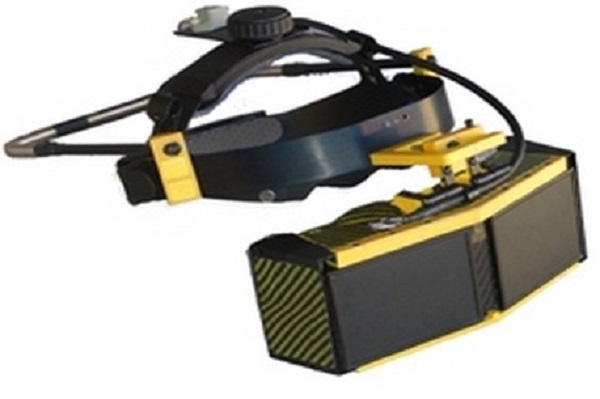
The company released multiple head-mounted displays by 1994 with the biggest seller being the Wide5 HMD. It redirected light off a mirrored surface to eliminate refractive aberrations and provide a stunning 150-degree field of view in a short 1/2 inch lens! Yes, that is almost as wide as a Pimax 5K of today! The Wide5 weighed less than 1 kg and displayed a stereo image over a 150°field of view horizontally, 88° vertical with a dynamic resolution that has been hardware resampled from an input signal resolution of 1600×1200 at 60 Hz
While the headset cost around $32,500 it was groundbreaking and the company still holds several patents with regards to many VR and AR technologies in use today. Without Fakespace Labs there would be no Pimax, it’s as simple as that.
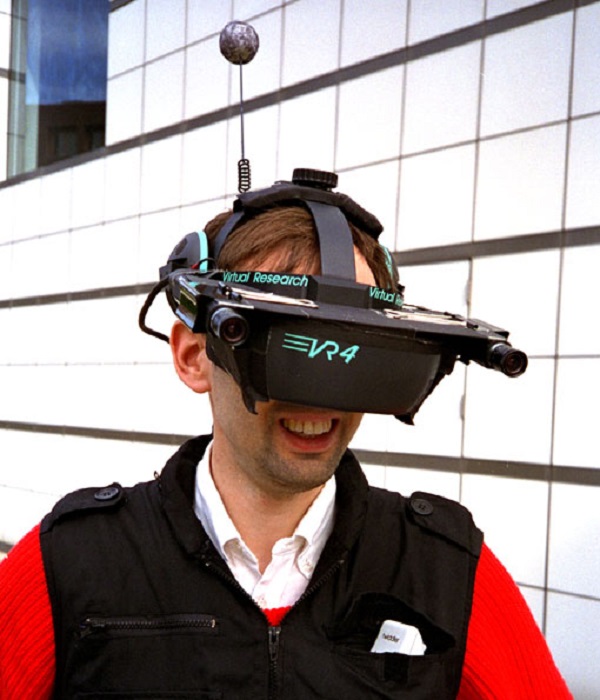
Virtual Research Systems also released the VR4 HMD. Introduced in May 1994, it used the same headband system that had been widely praised in EYEGEN3, but returns to LCD displays and a front shell structure to increase ruggedness and reduce the number of moving parts.
Its 1.3” LCDs had twice the resolution of the Plight Helmet and a field of view that is between that of EYEGEN3 and the Plight Helmet (°100), but with significant distortion at the periphery. The VR4 was intended for high-performance immersive applications and could serve a broad range of uses, from high-end entertainment systems to medical field training simulators, to telepresence.
The VR4 used 1.3″ active-matrix liquid crystal displays that had a 60-degree diagonal field of view. The resolution for each eye was 742 x 230 and it accepted NTSC signals (640×480) as input, which meant the headset lost one half of the vertical resolution from the original NTSC signal. While it weighed only 0.935 kg it still had a rugged outer shell that made it ideal for undergraduate lab use. The VR4 also had audio headphones with excellent 3D audio spatialization and it could run on just about every platform at the time.
In 1991 Computer Gaming World predicted, “affordable VR by 1994”, but it was not meant to be at all. In fact, it seemed VR was heading back in the direction it come from, back to the labs and research centres and out of the hands of ordinary people. But don’t worry, the very next year Nintendo was going to jump into the ring and all would be well! …OK, we all know how that goes, but it is still worth a read I promise.
